Stop us if you've heard this before — Apple's iPhone 16 Pro remains the sweet spot for performance, price, and device size for the demanding user.
In September 2024, there are a new batch of iPhones. This is known, and expected. Just about everybody in the world knows what they are, what they can do, and how to use them.
There's only so much a company can do with a smartphone to make it stand out in the crowd. Design flair is one, but ultimately, it's still a rectangle with glass and cameras.
Apple has reused the same case design it shipped last year, so there's no draw in 2024 from a fancy new design. This design remains very similar to the previous model, which was close to the one before that, and so forth.
And, as always, that remains fine, albeit expected and reasonably dull. Even so, Apple continues to crank out exemplars that other smartphone manufacturers should shoot for.
iPhone 16 Pro review: Design and size
In previous years, the Pro model of iPhone matched the size of the non-Pro version of the iPhone. Apple threw that out the window for 2024.
This time around, the iPhone 16 Pro is a bit bigger.
At 5.89 inches tall and 2.81 inches wide, it's a little bit bigger than the previous generation, but not by much. It'll feel a little bit bigger, but we're not talking iPhone 16 Pro Max unwieldiness here.
This does translate into a bit of a weight gain for the model, with it now tipping the scales at 7.03 ounces. The titanium and glass sandwich construction introduced last year certainly helps mitigate what could've been more serious gains.
This extra size also means Pro buyers will have a bigger screen. With it using a 6.3-inch Super Retina XDR display, it's a bit bigger than the 6.1-inch old sizing, but nowhere near the 6.7-inch old Pro Max screen, nor the new 6.9-incher either.
Where you do gain is in resolution. Now it's an always-on display with a 2,622 by 1,206 image, maintaining Apple's preferred 460ppi pixel density.
The screen is still very high-specification, with its 2 million to one contrast ratio and 2,000 nits of maximum brightness guaranteeing great picture quality. Even if you're using it outdoors.
ProMotion, the ever Pro feature, returns yet again, driving 120Hz refresh rates and enabling the always-on screen function. Wide color (P3) support, HDR, and TrueTone are also present as usual, along with the Dynamic Island.
Apple is still continuing to use the Action Button instead of the mute switch, which is a relic of its earlier designs. Though, with the inclusion of Camera Control, there's less need to make the Action Button summon the camera anymore.
More on Camera Control in a bit, though.
iPhone 16 Pro review: Cameras
The iPhone 15 Pro Max had the biggest camera changes in 2023. For 2024, it's the turn of the iPhone 16 Pro to catch up.
The 48-megapixel Main sensor, rebranded the Fusion Camera, is the same as last time. Down to the f/1.78 aperture and the use of a second-gen sensor shift OIS system.
The massive resolution enables the virtual fourth camera, a 2x "optical" zoom created by cropping, to resurface as well. It's a fake 12MP camera, but it's a neat trick to pull off.
While it missed out on the Tetraprism lens arrangement last time, Apple at least decided it was worth adding this year. The Telephoto sensor is still a 12MP shooter, but now the 3x optical zoom it offered has increased to a 5x version, matching the Max.
15X versus 25X digital zoom comparisonConsequently, this also means that the maximum digital zoom range goes up to 25x, just like the Pro Max.
The Telephoto parity is a catch-up move, but at least there's no such issue with the Ultra Wide camera. This time it's been changed from a 12MP sensor to a 48MP version, which still has an f/2.2 aperture and a 120-degree field of view.
Macro using the new ultra-wide camera comparisonYour ultra-wide close-range group shots or photos of landscapes will be in a lot more detail.
Ultra-wide comparisonOnce more LiDAR exists in the back, which is helpful for applications that offer depth mapping, as well as if you're trying to focus on a subject at night.
All this imaging is still backed by Apple's persistent push for computational photography. The Photonic Engine and Deep Fusion are still at play, pushing pixels to make the perfect image.
When it comes to video, it starts off from the solid base that Apple installed with the iPhone 15 family. The videography-focused design decisions remain for 2024, but are also augmented with some extra improvements.
Primary camera comparisonLast year's 4K 60Hz Dolby Vision ProRes recording to an external drive has been upgraded to a new higher standard. Now, it's possible to do the same, but at 120Hz.
Things like recording in Log and support for the Academy Color Encoding System continue to be great elements for video producers, as is external recording. But the maximum frame rate for 4K footage could be the biggest change of all.
Consider Slo-mo in previous models, which is 1080p at either 120fps or 240fps. What Apple has done here is create the equivalent of the lower-speed Slo-mo but for the highest resolution it offers.
The front of the iPhone 16 Pro still uses a 12-megapixel True Depth camera array for Face ID and selfies. Complete with an f/1.9 aperture, Focus Pixels, and a six-element lens, and depth mapping capabilities.
The onboard smarts aren't just for video, as sound gets a bump this time. Audio Mix will use Spatial Audio capture and AI to adjust the voices in a video to your preference.
This includes only capturing the voices of people in-frame, or adjusting the audio to sound more professional. There's even a cinematic mode so you can shift all voices to the center.
Thanks to the USB-C port, you no longer need to rely on your internal storage. Users can connect an SD card, thumb drive, or SSD to that USB Type-C port and record directly to that media.
With the appropriate cables and adapters, a filmmaker can now connect USB-C iPhone to a USB-C hub that has power input, an HDMI output that can connect to an iPad as an external monitor, and a USB-C output to record to an SSD at about 10 gigabits per second.
This landscape was rough a year ago with the iPhone 15 Pro models. There wasn't much in the way of custom storage solutions to bolt on the back of your iPhone. There were many DIY solutions, of varying quality.
There are many choices now, though, and there seems to be a lot that's been released in recent days around the launch of the iPhone 16 family.
Regardless, we still recommend sticking with higher-performing media. In our testing, slow media causes dropped frames or can error out completely after a period of filming.
Test what you buy before you rely on it for a gig.
Camera Control is new, though. It is a touch-sensitive button that acts like the shutter for the camera, that also allows you to change the camera settings by sliding your finger around it.
Just about any exposure, magnification setting, or discrete adjustment can be adjusted with this button. We aren't going to get into the use of it so much here, as we've discussed this in some depth before.
For taking photos quickly, a light press brings up a minimal camera app interface, but allows for the user to slide to zoom. Apple says that developers will be able to bring Camera Control to third-party apps, such as Snapchat.
That will depend on developers adopting the new control, so it is likely that apps will begin using it over the next months. Also coming later this year is Apple's own additions to Camera Control, letting it work with visual intelligence.
As its name implies, the Camera Control button offers new functionality related to photo and video capture. It can be used in both the horizontal and vertical device orientation. The Camera Control can recognize and respond to a multitude of different gestures and press types:
- Single click: Opens the Camera app or a compatible third-party app
- Single click, within the Camera app: Takes a photo
- Click and hold: Opens the Camera app and starts recording video
- Single light press: locks focus and exposure on a subject (available later in the fall of 2024)
- Double light press: Opens a minimal camera preview menu, which lets users select different controls such as exposure or depth of field
- Swipe along the surface: adjusts different parameters such as zoom, exposure, or depth of field
As part of a new Visual Intelligence feature, users will be able to click and hold the Camera Control button while aiming their iPhone at an object or location of interest.
It's... okay. At least for now. It's going to take some muscle memory adjustment to get the most out of it. It may not be worth the effort, though, as it is very much a matter of taste and workflow.
Opinions on the utility of the button as a camera adjustment tool are mixed amongst the AppleInsider staff. It's a distraction to some, and crucial to others.
We'll talk more about it in a month as we all use the button more.
iPhone 16 Pro review: Performance and Apple Intelligence
The annual upgrade also introduces a new chip to the mix. From the A17 Pro of last time, Apple's now on the A18 Pro.
It's got a six-core CPU, using two performance cores and two efficiency cores as usual, and is made from a second-gen three-nanometer production process. This time, Apple claims it is up to 15% faster than the A17 Pro, but uses 20% less power.
There's also some assistance from new ML accelerators, which are optimized for Apple Intelligence too.
The GPU is a six-core version again, but Apple insists it is 20% more powerful than the A17 Pro. That includes hardware ray-tracing capability, which is twice as fast than in the previous version.
The Neural Engine is, yet again, a 16-core model. While the A17 Pro was a massive improvement over its predecessor, Apple insists the latest edition is faster and more efficient again.
It is, we're sure. It's just hard to quantify and benchmark from a practical perspective.
For end users, this is delivered in Photos. The faster cores will provide faster onboard processing of Apple Intelligence commands, compared to the iPhone 15 Pro models.
As far as CPU and overall performance goes, we do comparison pieces where we consider the new model versus the year-ago family of devices. In reality, most users are coming from a device that's three years old. In this case, that would be the iPhone 13 Pro.
Beyond the obvious iPhone 13 Pro not being able to use Apple Intelligence, there's a giant performance gap between that flagship model, and the 2024 best iPhone.
In short, the iPhone 16 Pro is roughly 25% faster in single and multiple core jobs. There's also ray tracing in (some) video games for the iPhone 16 Pro, which make those look even better.
There's been a lot of talk about thermal throttling on the new iPhones, from the usual sources. It's still early, and the tale still fully remains to be told if it is abnormal or not, but every chip in mobile or desktop in every regard made in the last 20 years has some routine to slow down if it is in danger of overheat, or similar.
The issue really boils down to a matter of consumer tolerance. This isn't helped by the fact that we've seen a wide variance between users in iPhone temperatures, which probably comes down to the phones still indexing for some and not others, differences in charging habits, app usage, and even if an app is a good citizen as it pertains to iPhone resource use.
Apple hasn't said much about it, and probably won't. We'll be keeping an eye on it with time, though.
But, in our experience, the iPhone 16 Pro takes longer to slow down because of the thermal condition. Apple has done a lot of work on the enclosure, battery, and cooling system of the phone.
The iPhone 16 Pro still doesn't and won't ever have a fan, but it takes longer to hit that thermal saturation on the device that the iPhone 13 Pro hits very fast.
Most users, even Pro ones, don't push their iPhone very hard for very long. It's good to have that better cooling though, as it may matter for Apple Intelligence.
But let's talk about that gorilla in the room for a minute.
Ultimately, Apple is leaning heavily on Apple Intelligence to market the iPhone 16 Pro. When we review hardware initially, we do it with the shipping OS, not any that are still in beta.
These features will arrive in iOS 18.1, and more throughout the next year. We'll be talking about the first batch of additions in a longer-term review in about a month.
iPhone 16 Pro review: Connectivity, Power, and Battery
Since the inclusion of 5G support, Apple has maintained offering both sub-6GHz and mmWave band coverage on its top-line iPhones in the US, but not elsewhere. There's no difference here at all, and you wouldn't expect there to be.
There is some shifting on the Wi-Fi side, as now the iPhone 16 Pro sports Wi-Fi 7. If you have the infrastructure to take advantage of it, at least.
Thread support is included, along with the second-generation Ultra Wideband chip, so searching for missing AirTags are still an option.
As for physical connectivity, Apple is still maintaining the use of USB-C with its 10Gbps transfer rate. This is essential for the aforementioned videographers who need to get their video off the iPhone, or recorded to an external drive.
Wireless charging now works at up to 25W using MagSafe, which is an exciting development. Wireless charging has always lagged behind wired charging, such as the 15W supported with Qi2 chargers or 7.5W with Qi.
At least now you could potentially see a significant uptick of power when you place your iPhone on a cafe's charging pads. That is, if they use the right tech.
Wired fast charging continues to provide a 50% charge within 30 minutes using a 20W charger. This is more than adequate enough for most people.
In our testing, we hit 34W of power with suitable wired charging gear, and we've seen reports of some users getting 39W while charging.
As for how much battery life you can get, Apple's boosted the capacity so you can now watch up to 27 hours of local video playback. Netflix-style streaming will last for up to 22 hours, while audio playback goes up to 85 hours.
That's a lot of podcasts.
iPhone 16 Pro review: For when things go wrong.
Yet again, Apple is making it so that you don't need phone signal to use your iPhone to contact others.
Emergency SOS via Satellite is back, alongside Roadside Assistance via Satellite. Whether you're lost, you're in medical trouble, or your car's been in an accident in the middle of nowhere, you can at least get some help.
In both cases, you're dealing with a largely text-based system, since bandwidth is an issue. However, there's also Messages via Satellite which lets you send and receive messages and tapbacks while in a blackspot.
If you happen to be somewhere with signal, there's now an option to share a live feed from your iPhone to emergency responders. This should give attendees more of an idea of what to expect when they actually turn up to the incident.
As for the incident itself, Crash Detection is back too. Whether it thinks a rollercoaster is a horrific accident remains to be seen.
Should you buy the iPhone 16 Pro?
If you have a phone as new as iPhone 14 Pro, you don't need the iPhone 16 Pro — unless you're going to lean heavily into Apple Intelligence. As always, there's some cool stuff here, but with a phone as new as two years old, you may be better served waiting for that third year like most do.
For some, like folks on Apple's iPhone Upgrade Program, an annual update is essentially a requirement. Otherwise, the replacement cycle is stretching out, so even the Pro iPhone line is best looked at in a lens that stretches out over multiple years.
If you are in the market you can feel confident about the iPhone 16 Pro as a holistic whole. We've been saying for years that the Pro model iPhone released in any given year suits our regular readers the best.
The iPhone 16 Pro in 2024 is no exception.
iPhone 16 Pro review: Pros
- New faster A18 Pro chipset
- 5x optical zoom makes it to the smaller Pro iPhone
- Camera Control is mostly a positive
iPhone 16 Pro review: Cons
- Marketing leans heavy on a feature that isn't available yet
- Cameras are not hugely better than in the iPhone 15 Pro
Where to buy Apple's iPhone 16 Pro at a discount
Wireless carriers are offering aggressive incentives through bill credits and Trade-in deals on the iPhone 16 Pro. At press time, the offers deliver up to $1,000 off the premium model, which can be found below. You can also visit our iPhone 16 Pro Price Guide for easy side-by-side comparison of the current offers.
- Boost Mobile on Amazon: Save up to $1,000 (no trade-in required)
- AT&T Wireless: Get an iPhone 16 Pro on AT&T with qualifying trade
- Verizon Wireless: Get an iPhone 16 Pro on Verizon with eligible trade *Terms and conditions apply. Please see site for details.
If you're looking for promotions on the iPhone 16 or iPhone 16 Pro Max, today's best iPhone deals on the entire product range are available at your fingertips.
 Mike Wuerthele
Mike Wuerthele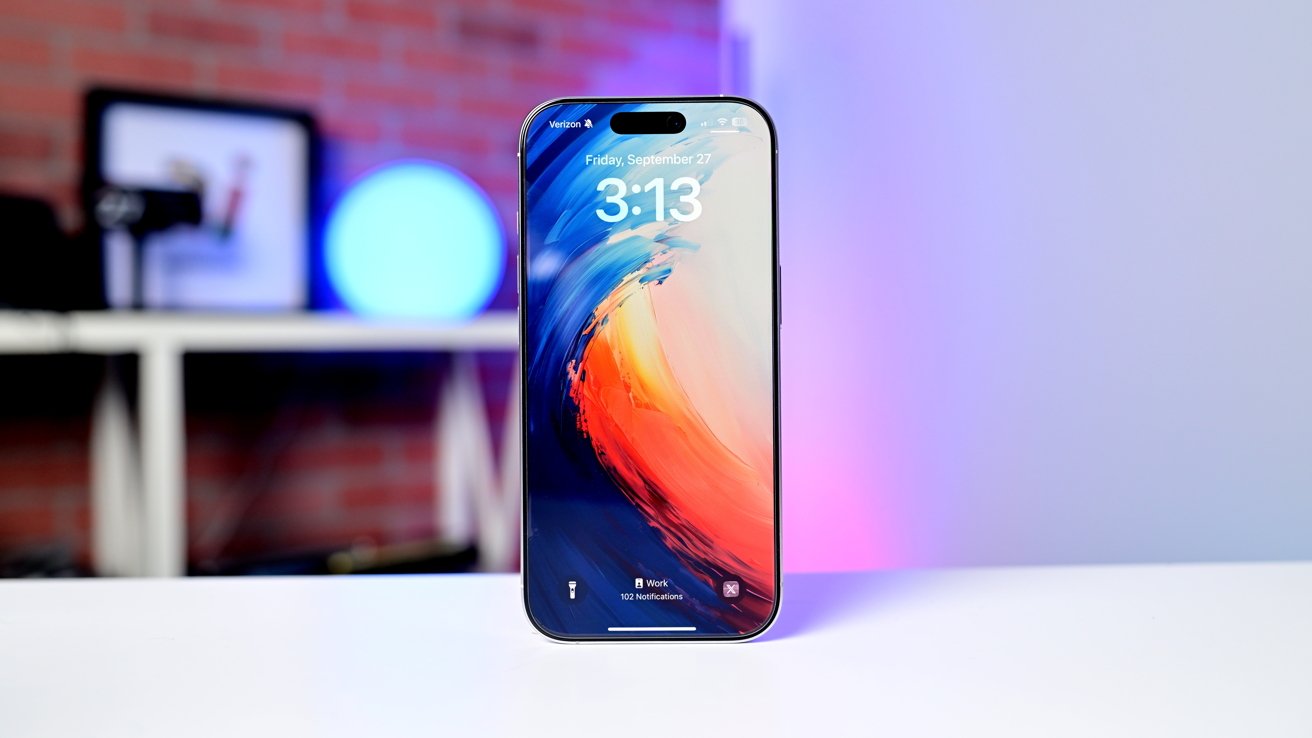
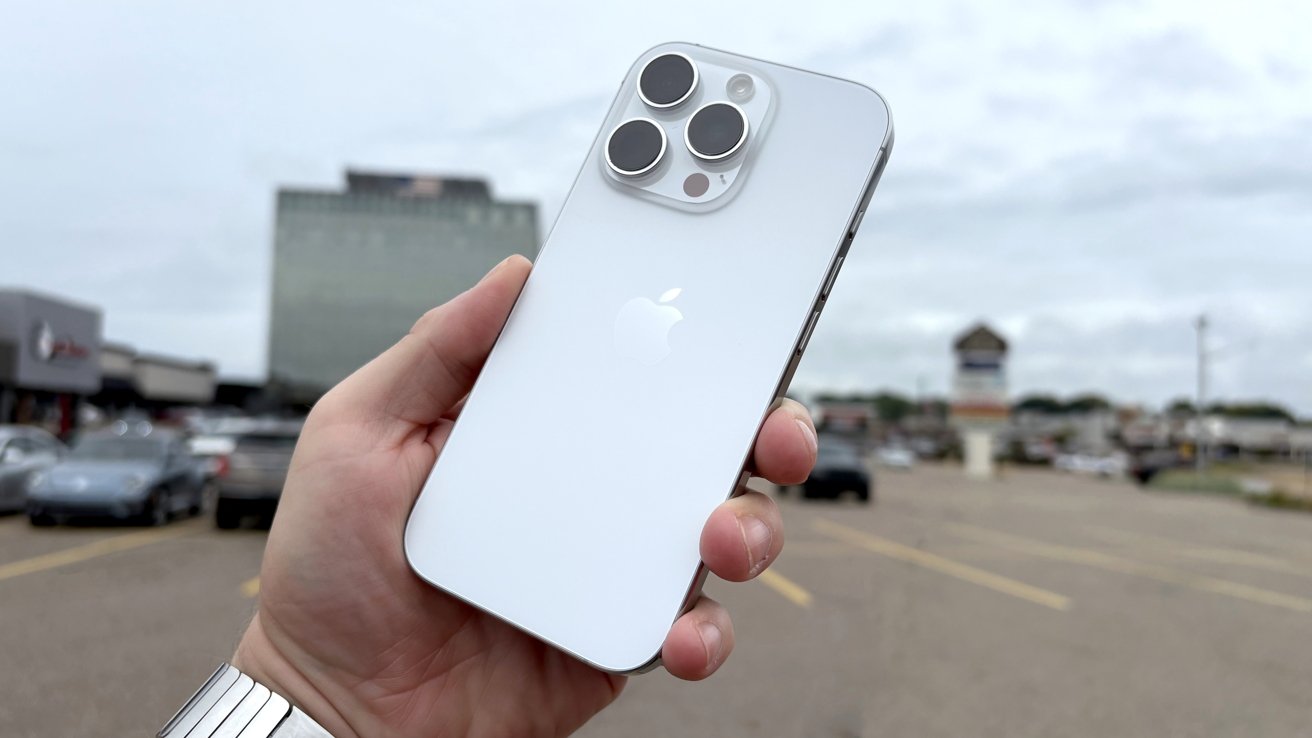
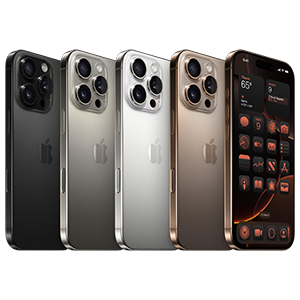

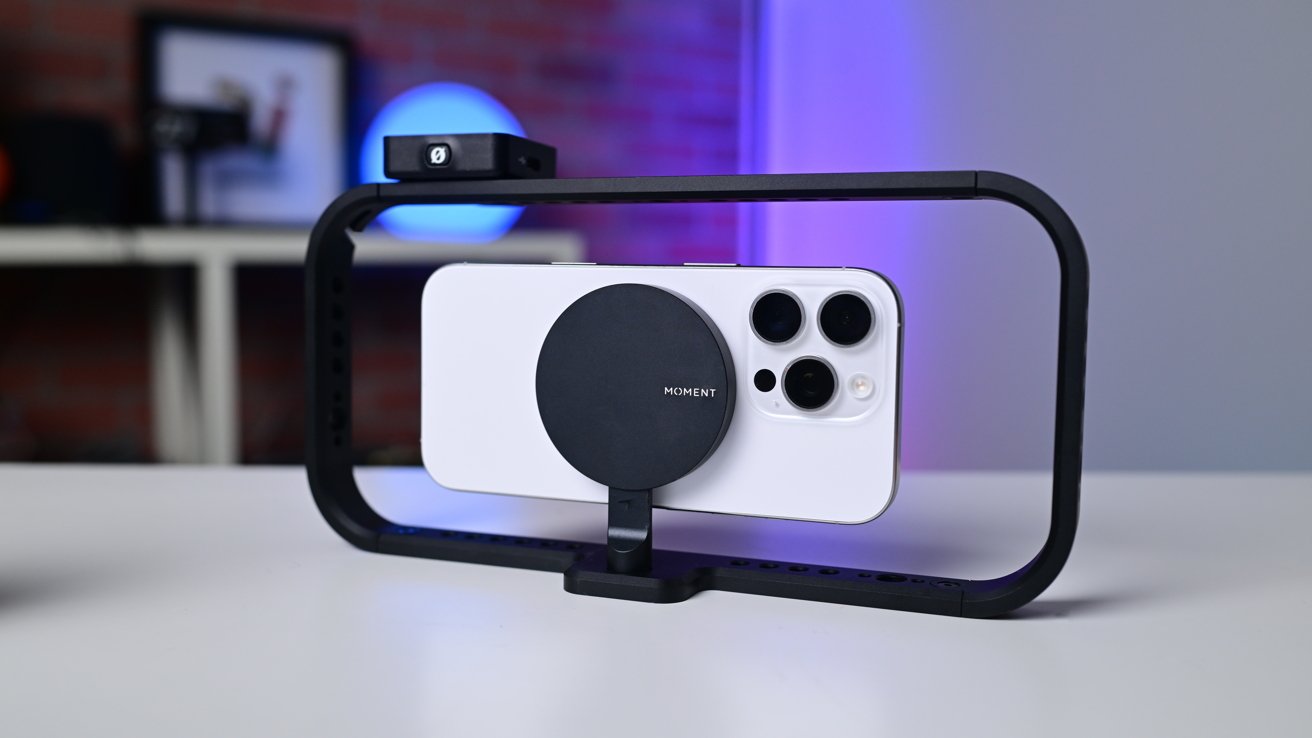
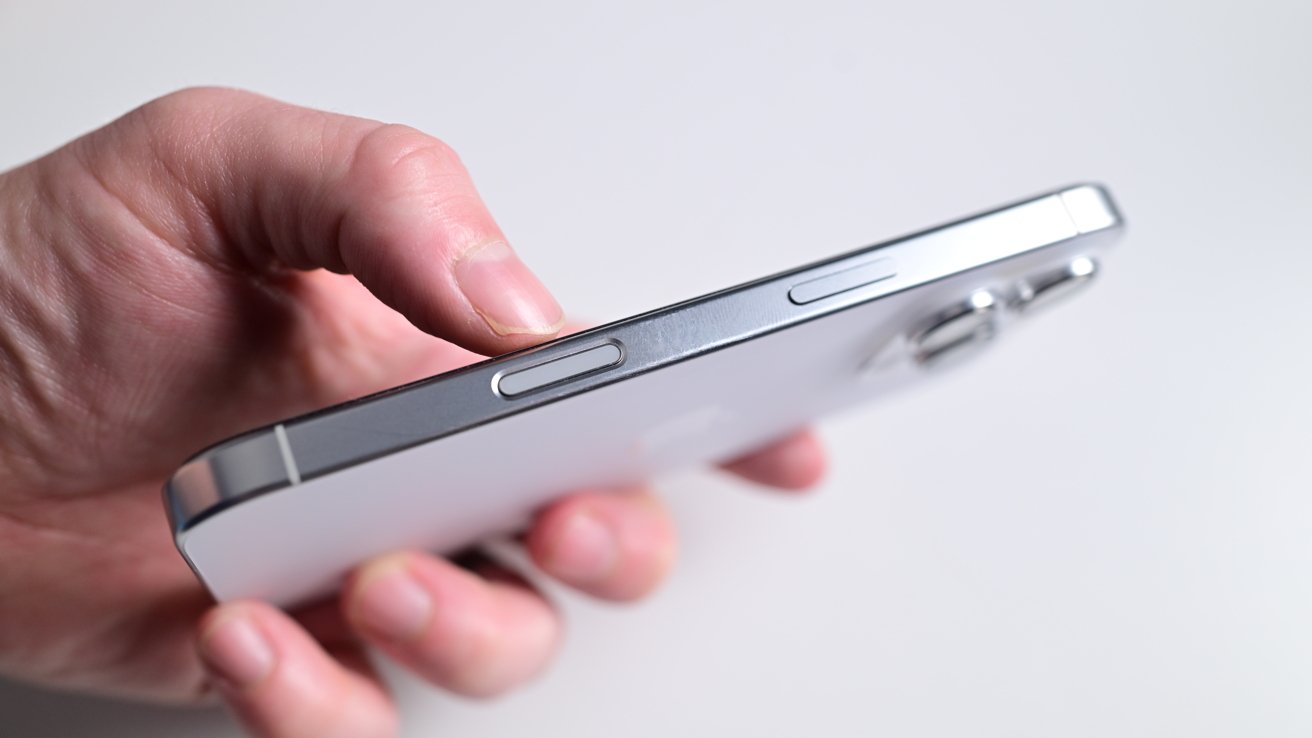

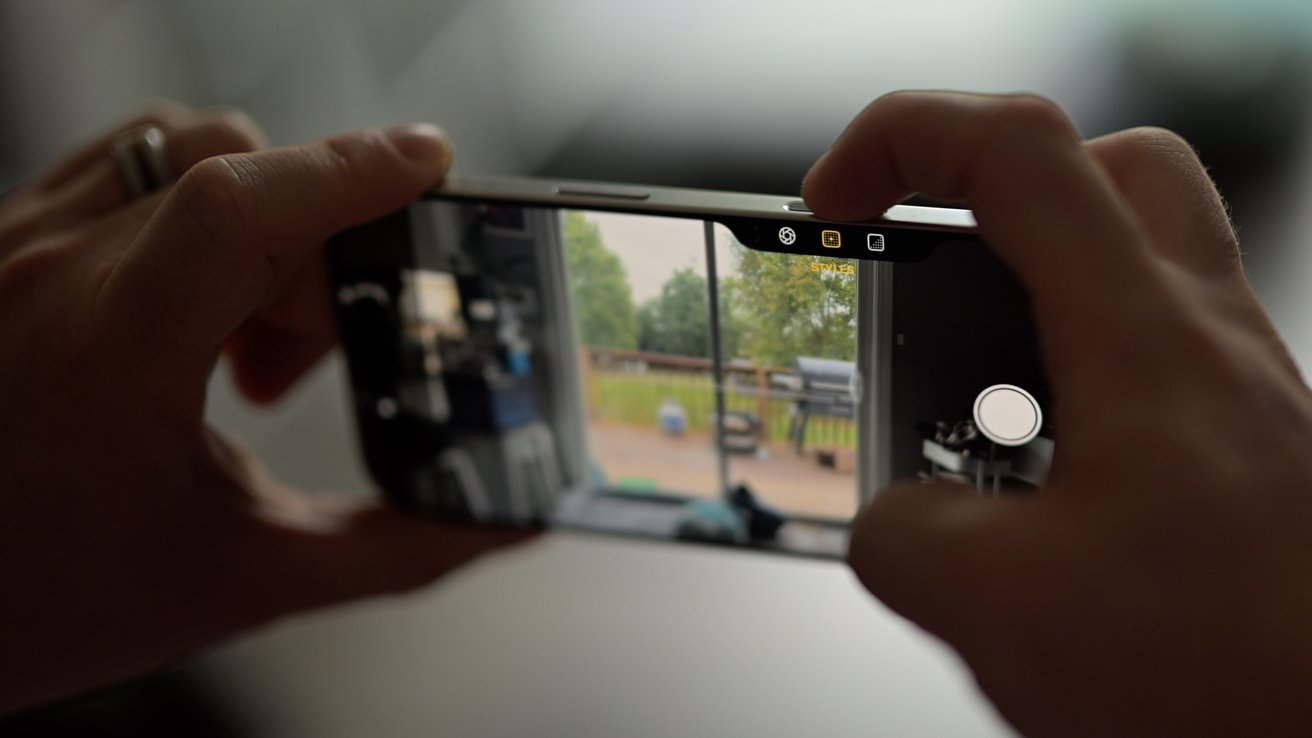

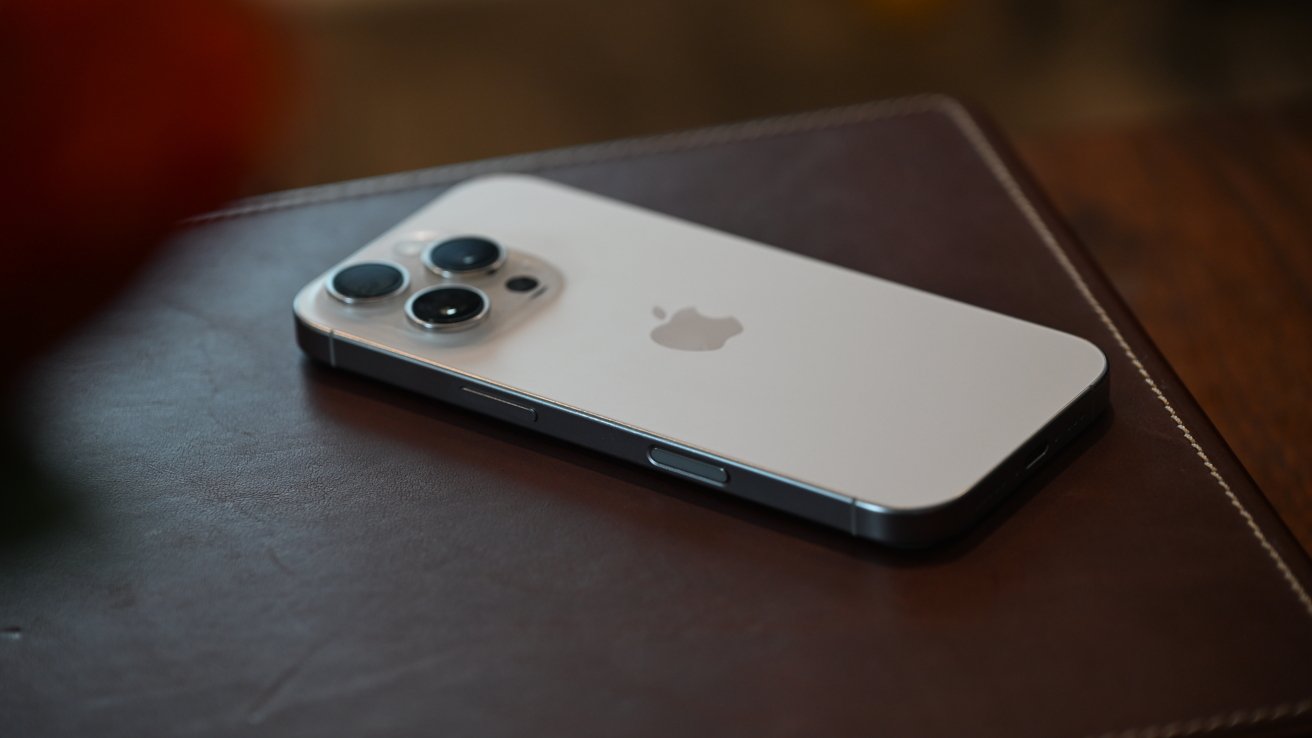
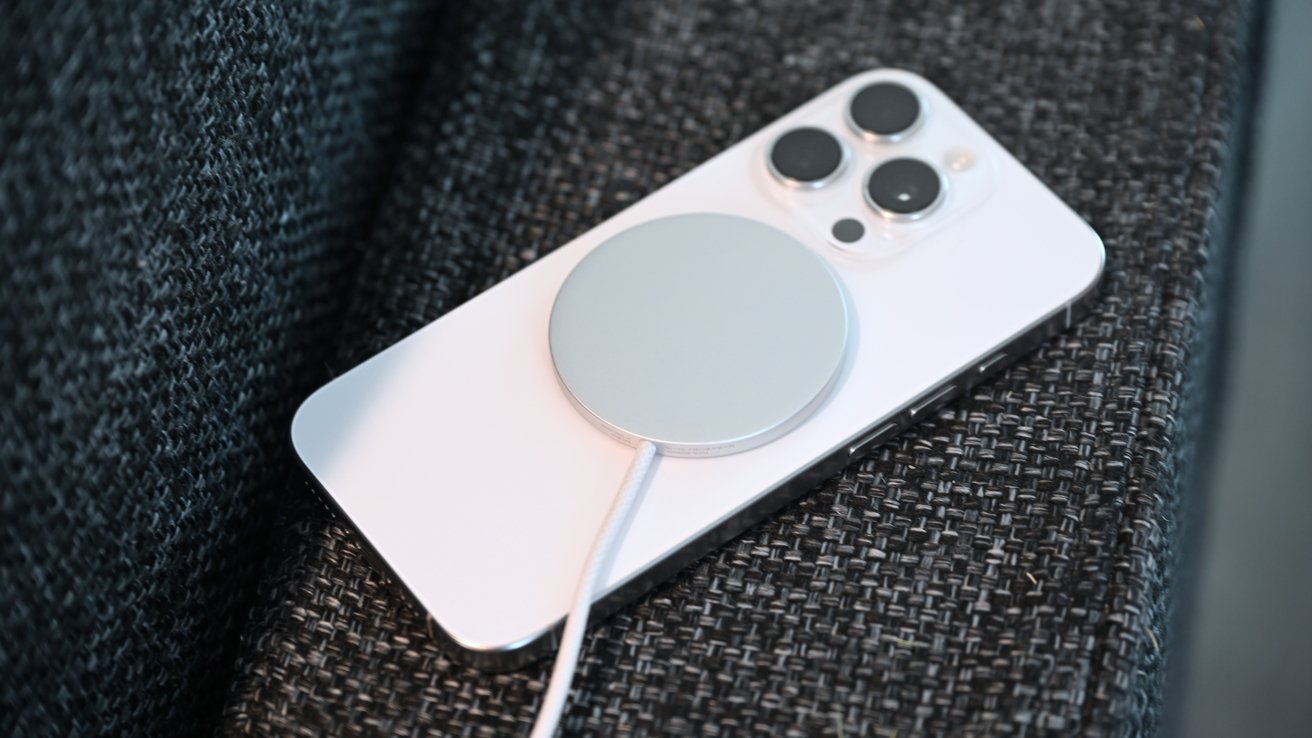
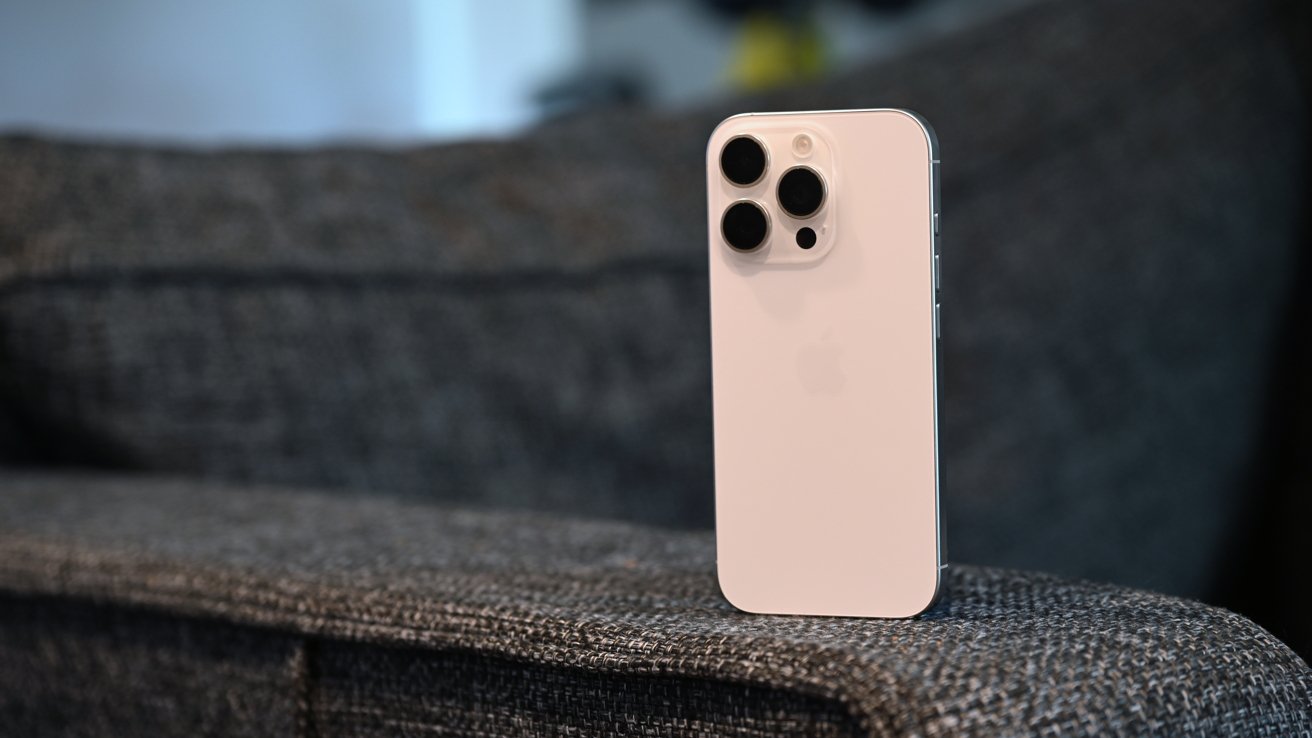







-m.jpg)






 Bon Adamson
Bon Adamson
 Marko Zivkovic
Marko Zivkovic
 Amber Neely
Amber Neely
 Malcolm Owen
Malcolm Owen


 Christine McKee
Christine McKee


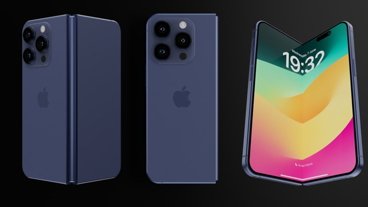
-m.jpg)






7 Comments
I upgraded from my iPhone 11 Pro to the 16 Pro last week. While I have wanted the 5x telephoto lens, I have never liked the "Plus" size iPhone Pro (too bulky). As the rumors circulated that the 16 Pro would have the tetraprism lens, I waited anxiously for the Apple Event earlier this month and preordered as soon as possible. I have been extremely happy with my 16 Pro, and have already done two dedicated photo shoots where not having the 5x lens would have limited me significantly....this by far is the best iPhone that I have ever had.
And, I got an unexpected $150 trade in value for my iPhone 11 Pro from Apple, which more than paid for the 256 GB upgrade for the 16 Pro.
I upgraded from the 13 pro max to the 16 pro max
for me it wasn’t really necessary but i am always so impressed by Apples superb quality control, just a fantastic device to hold in the hand
and it can never be overstated how valuable and consistent apple’s software support has proven to be over the years
Since Apple AI won't be fully realized until well more than halfway the iPhone 16 launch cycle, just wait for the iPhone 17 rumored to be much better. If you have a 15 Pro like me, no need to upgrade at all since the 16 really doesn't improve the 15 in any major ways. Plus, 15 Pro/Max users are already on the receiving end of AI...whenever it appears.
Upgraded my wife's and my 13 pros to 16 pros. One feature I wanted was the satellite connectivity that only first appeared on the 14 phones. Who would have known that just a week after getting the phone I needed to use that feature for messages during the Verizon outage. A little awkward having to keep the phone aimed at the satellite (it guides you where to point) but that's minor given that I could indeed send messages.